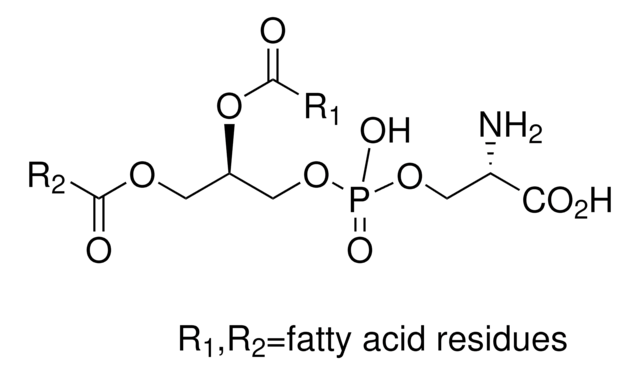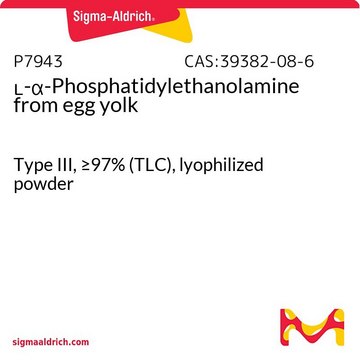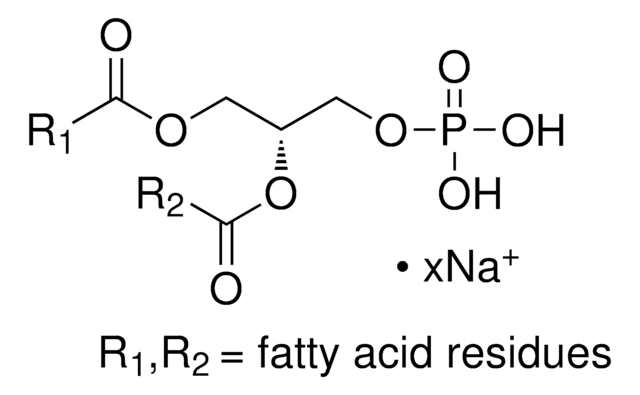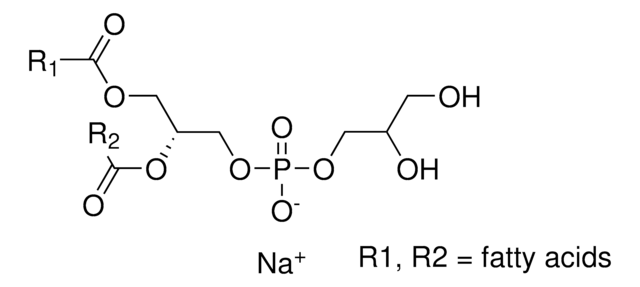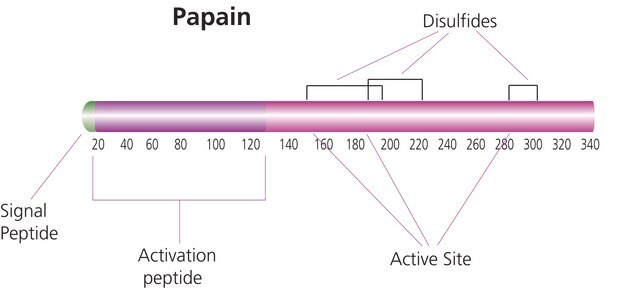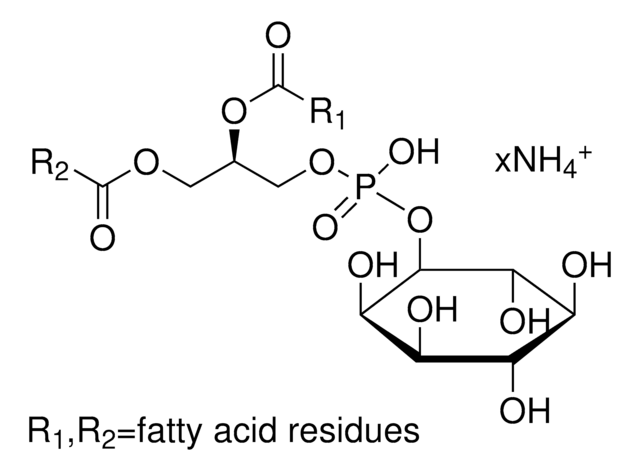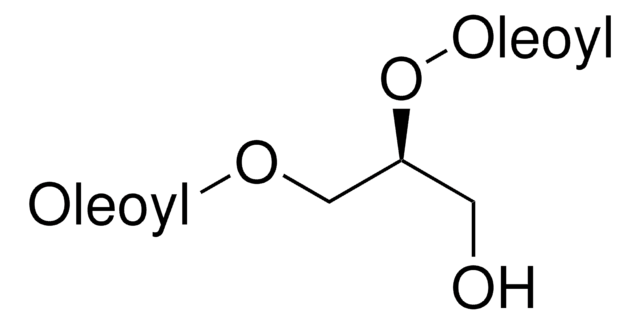Wszystkie zdjęcia(2)
Kluczowe dokumenty
P7769
1,2-Diacyl-sn-glycero-3-phospho-L-serine
from bovine brain, ≥97% (TLC), amorphous powder, structural phospholipid
Synonim(y):
3-sn-Phosphatidyl-L-serine, L-α-Phosphatidyl-L-serine, PS, Phosphatidylserine
Zaloguj sięWyświetlanie cen organizacyjnych i kontraktowych
About This Item
Kod UNSPSC:
12352200
NACRES:
NA.77
Polecane produkty
Nazwa produktu
1,2-Diacyl-sn-glycero-3-phospho-L-serine, ≥97% (TLC), from bovine brain, amorphous powder
pochodzenie biologiczne
bovine brain
Próba
≥97% (TLC)
Formularz
amorphous powder
temp. przechowywania
−20°C
Szukasz podobnych produktów? Odwiedź Przewodnik dotyczący porównywania produktów
Zastosowanie
1,2-Diacyl-sn-glycero-3-phospho-L-serine has been used:
- as a lipid standard in time-of-flight secondary ion mass spectrometry (ToF-SIMS) spectral fingerprints
- as a reference standard in thin layer chromatography (TLC) for quantifying lipids from astrocyte-conditioned media (ACM) treated fibroblasts
- as a component of large unilamellar vesicles for annexin A2 aggregation studies
Działania biochem./fizjol.
1,2-Diacyl-sn-glycero-3-phospho-L-serine or phosphatidylserine (PS) is a structurally diverse acidic phospholipid having fatty acid ester at the glycerol sn positions. Bovine brain cortex based PS is a potent brain nutrient. It favors neurotransmission and may improve memory in dementia. PS is also the major membrane phospholipid associated with the nuclear membrane, myelin, endoplasmic reticulum, Golgi and mitochondria. The synthesis of PS is catalyzed by phosphatidylserine synthase 1 from L-serine and CDP-diacylglycerol in the mitochondria-associated membrane (MAM) domains of the endoplasmic reticulum. PS is externalized during phagocytosis and is dysregulated in tumors making it a potential marker for therapeutic targeting.
A slowly metabolized structural phospholipid found mainly in gray matter.
Cechy i korzyści
This compound is featured on the Phospholipase D and PKC pages of the Handbook of Receptor Classification and Signal Transduction. To browse other handbook pages, click here.
Przestroga
Solutions exposed to room temperature will decompose about 0.5% per day.
Ta strona może zawierać tekst przetłumaczony maszynowo.
Kod klasy składowania
11 - Combustible Solids
Klasa zagrożenia wodnego (WGK)
WGK 3
Temperatura zapłonu (°F)
Not applicable
Temperatura zapłonu (°C)
Not applicable
Środki ochrony indywidualnej
Eyeshields, Gloves, type N95 (US)
Wybierz jedną z najnowszych wersji:
Masz już ten produkt?
Dokumenty związane z niedawno zakupionymi produktami zostały zamieszczone w Bibliotece dokumentów.
Klienci oglądali również te produkty
Regulation of the equilibrium between closed and open conformations of annexin A2 by N-terminal phosphorylation and S100A4-binding
Ecsedi P, et al.
Structure, 25(8), 1195-1207 (2017)
Thorsten Keller et al.
Molecular pharmacology, 95(2), 169-182 (2018-11-10)
Organic cation transporters OCT1 (SLC22A1) and OCT2 (SLC22A2) are critically involved in absorption and excretion of diverse cationic drugs. Because drug-drug interactions at these transporters may induce adverse drug effects in patients, in vitro testing during drug development for interaction
Phosphatidylserine is a global immunosuppressive signal in efferocytosis, infectious disease, and cancer
Birge RB, et al.
Cell Death and Differentiation, 23(6), 962-962 (2016)
Formation and function of phosphatidylserine and phosphatidylethanolamine in mammalian cells
Vance JE and Tasseva G
Biochimica et biophysica acta. General subjects, 1831(3), 543-554 (2013)
Comparison of molecular species of various transphosphatidylated phosphatidylserine (PS) with bovine cortex PS by mass spectrometry
Chen S and Li KW
Chemistry and Physics of Lipids, 152(1), 46-56 (2008)
Nasz zespół naukowców ma doświadczenie we wszystkich obszarach badań, w tym w naukach przyrodniczych, materiałoznawstwie, syntezie chemicznej, chromatografii, analityce i wielu innych dziedzinach.
Skontaktuj się z zespołem ds. pomocy technicznej